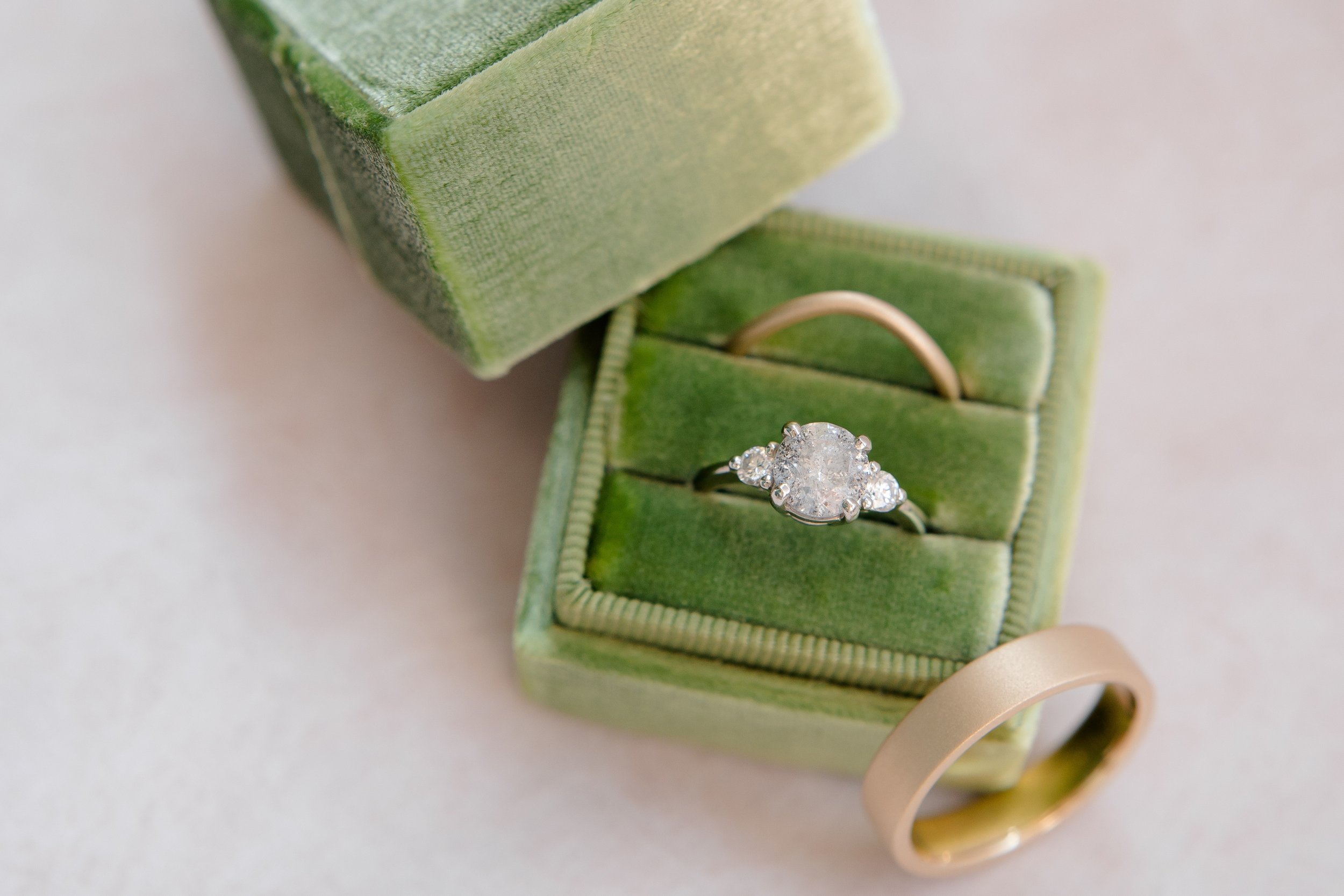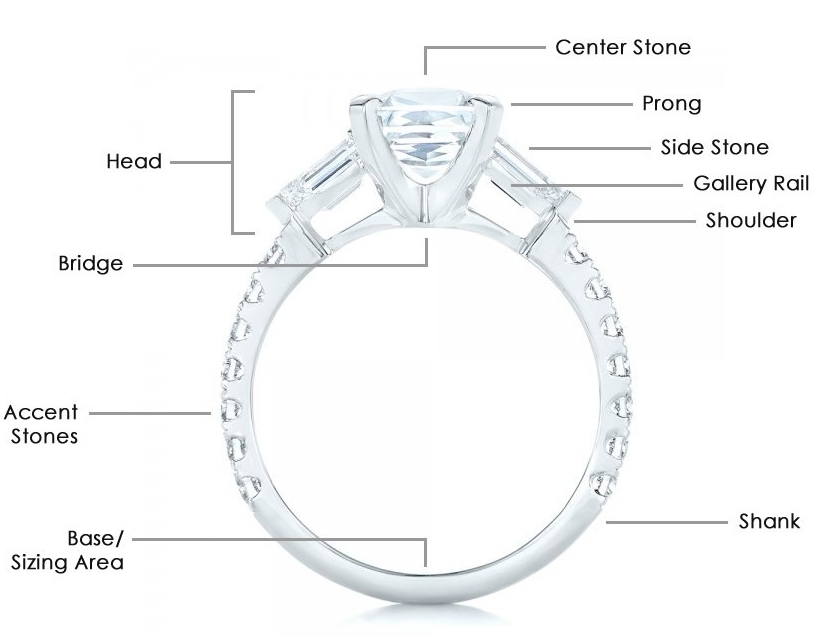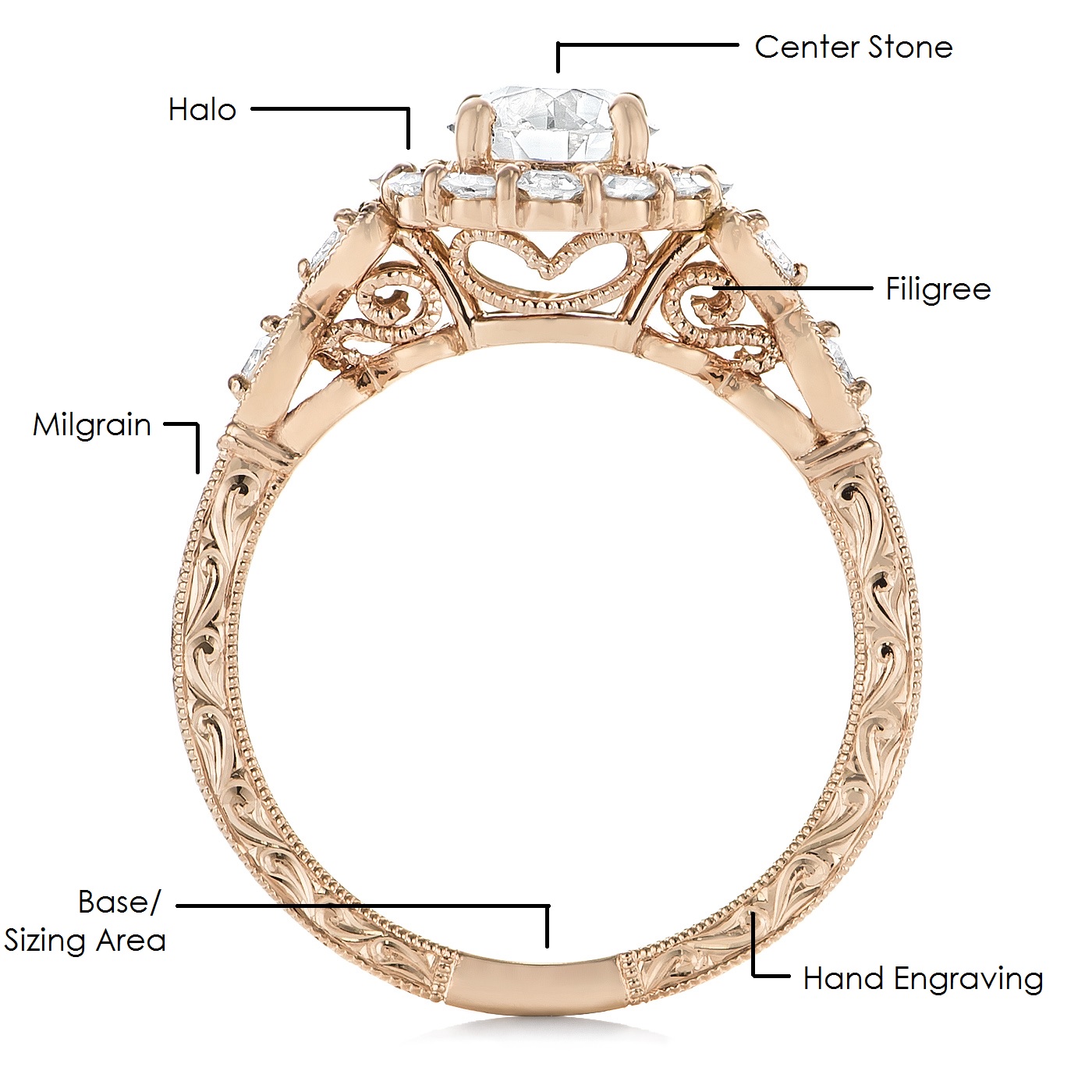Some wedding-related blog topics we simply cannot answer with our expertise, such as today's topic covering the anatomy of an engagement ring. It may be just us, but we are very fuzzy on what jewelers (or anyone for that matter) mean when they refer to the 'bridge' or the 'split shank' of a ring, and we thought it would be beneficial for everyone if we went straight to one of the experts to get first-hand advice on how to refer to the different parts of an engagement ring. Feel free to read on if:
(1) You are trying to explain to friends exactly what your dream engagement ring is so they can strategically sway your future fiancé's ring-purchasing decision,
(2) You are thinking of proposing to your partner and have no idea how to explain to the jeweler what you are looking for,
(3) Besides using terms such as 'elaborate design thing' or 'little circle of smaller stones around the big stone, ' you are just as in-the-dark as we are about how to speak the language of engagement rings!
If any of the above are true, then you are in the right place. We honestly learned a ton and had multiple lightbulb moments while putting this post together. Hopefully, the same happens for you! For the rest of this post, we are handing you off to Lauren from Joseph Jewelry (a local custom fine jewelry store in Seattle) to further educate you on how to properly communicate about engagement rings with others. She has been our go-to for all-things-fine-jewelry this year and she was amazing enough to make this blog collaboration happen.
Enjoy!
Head (setting). Top portion of a ring consisting of the major gemstones.
Gallery rail. Metal piece connecting prongs in order to prevent them from bending or shifting out-of-place.
Bridge. The area underneath the head (setting) that rests on the wearer's finger.
Prong. Metal 'legs' securely holding gemstones in place.
Shank. The part of the ring that goes around the wearer's finger, connecting both sides of the head together.
Center stone. Usually the largest and most prominent stone on the ring.
Side stones. Gemstones typically smaller in size compared to the center stone in the ring design.
Shoulder. The part of the ring where the top of the shank makes contact with the head (setting).
Accent stones. Smaller gemstones used as decoration for the shank.
Base/sizing area. The area furthest away from the head typically left plain so resizing does not affect the original design on the shank.
Depending on your preferences, you may also encounter more elaborate features such as those seen on this rose gold halo ring. Fine detailing along the shank and bridge are more common among vintage or vintage-inspired engagement rings.
Halo. A halo visually enhances the center of the ring and reflects more light into the center stone using gemstones, metal, or even ceramic tile.
Filigree. Hand-laid metalwork using fine wire to create all sorts of elaborate patterns.
Milgrain. Textured accent commonly used on vintage-inspired rings. Its appearance is similar to the texture on the outside of a coin.
Hand engraving. Intricate designs imprinted into the metal of the ring, created by an engraver.
I hope this helps you a bit more when you’re ring shopping, or even customizing a ring! Feel free to reach out to Alyssa or Joseph Jewelry if you have any other questions. We’re happy to help!
Happy shopping,
Lauren
info@josephjewelry.com



